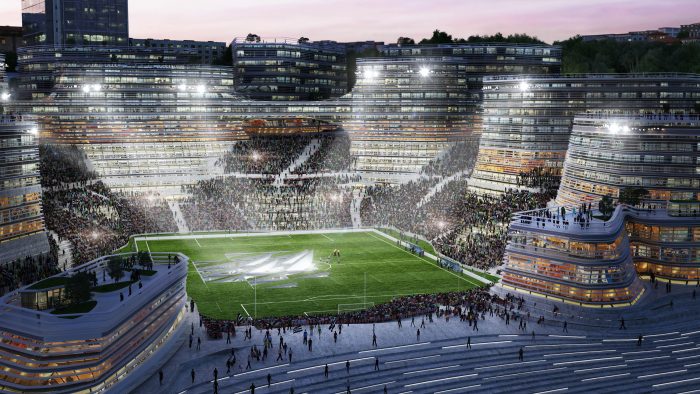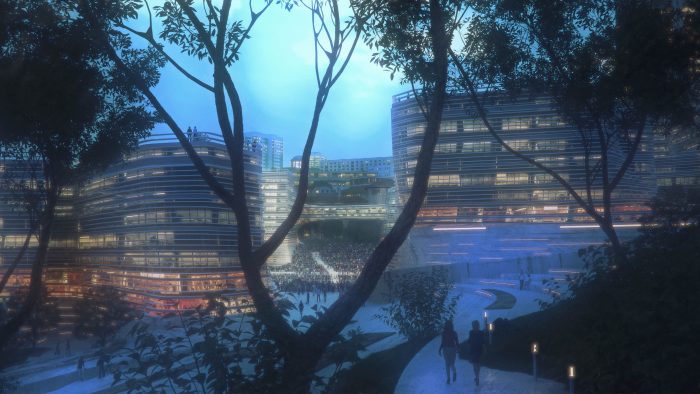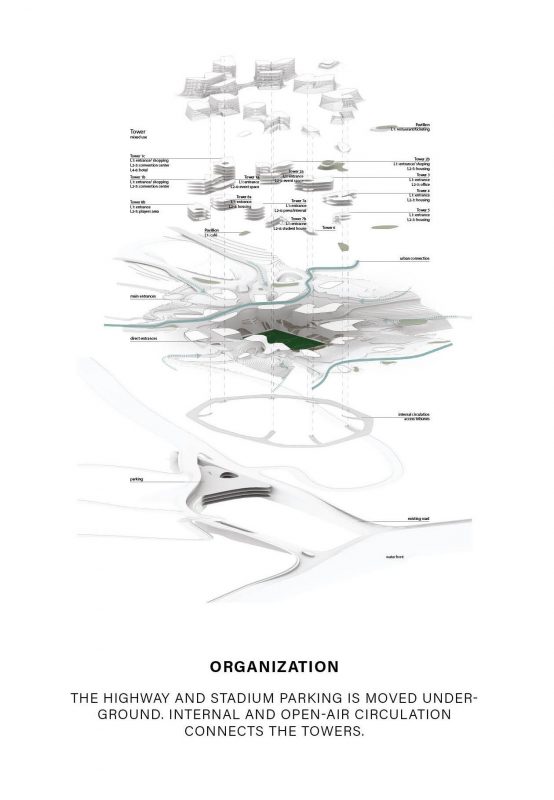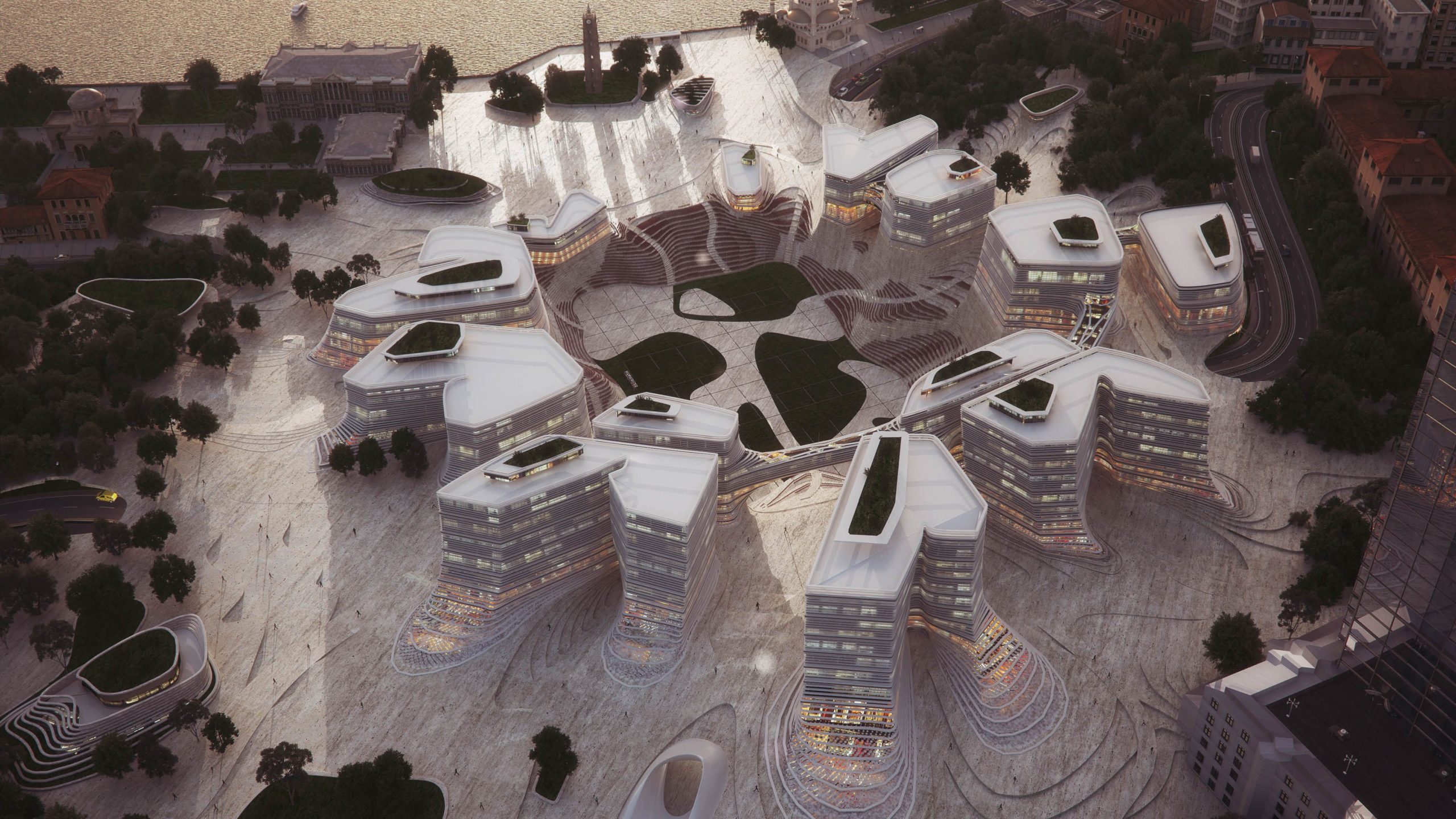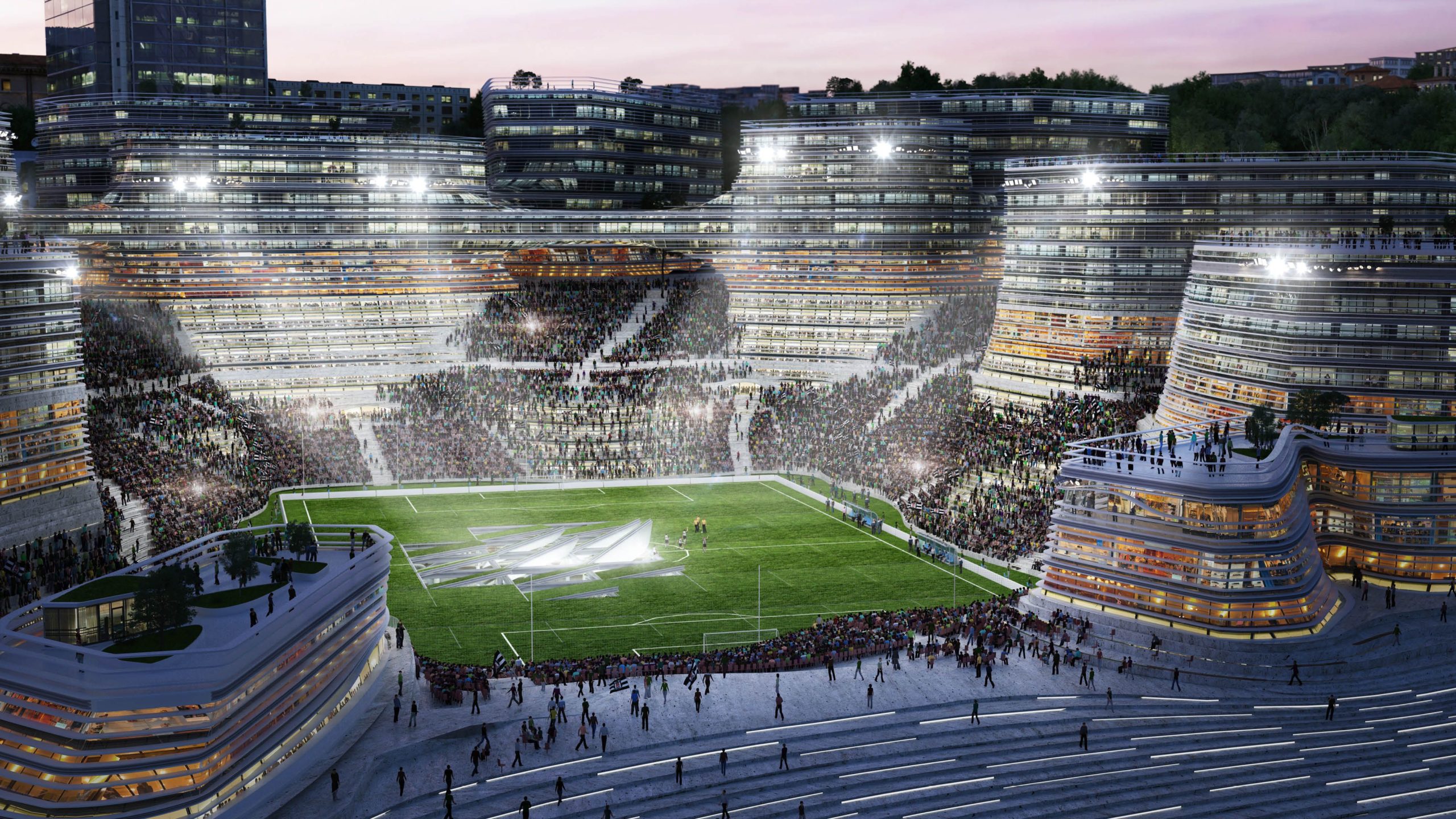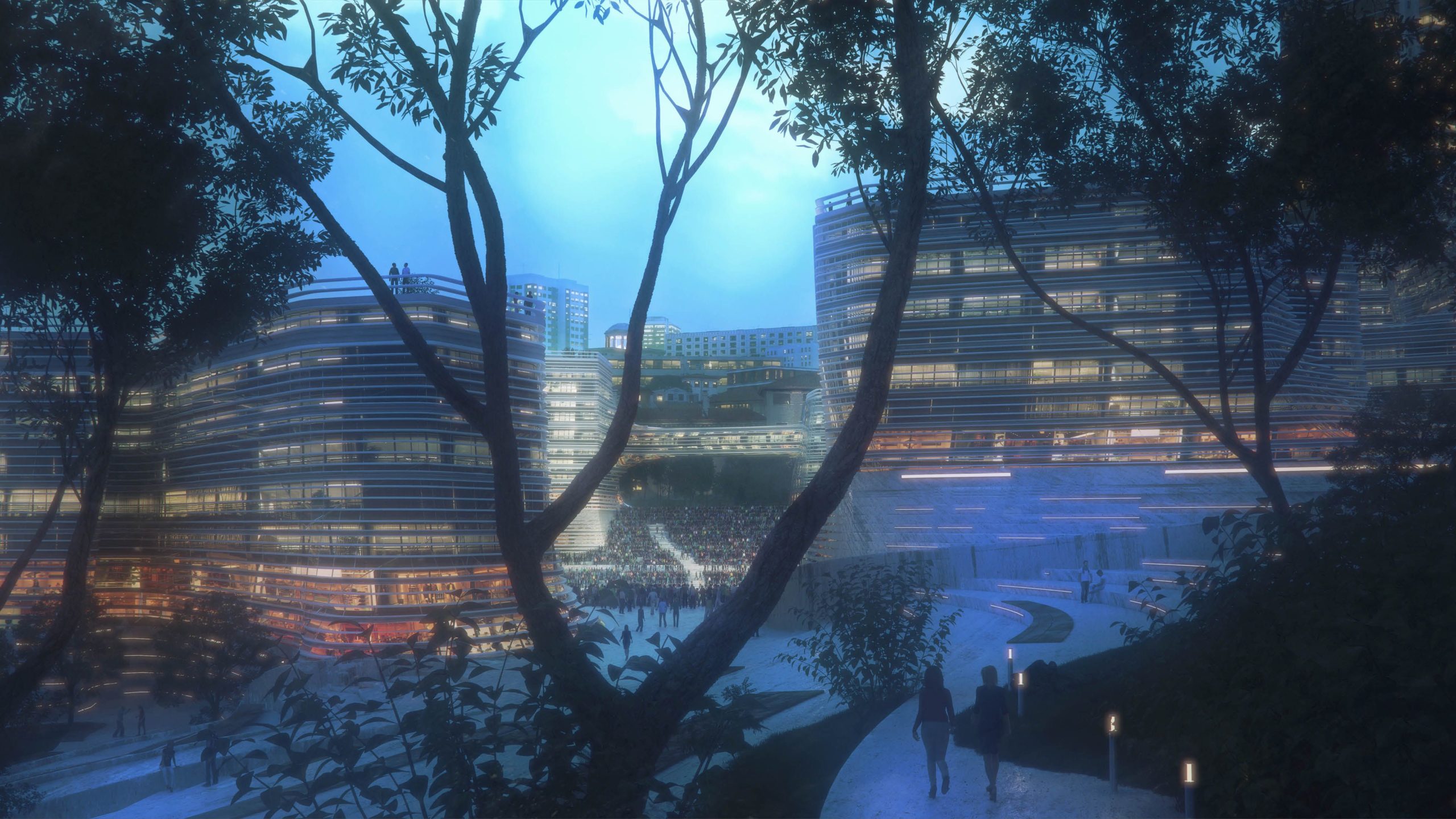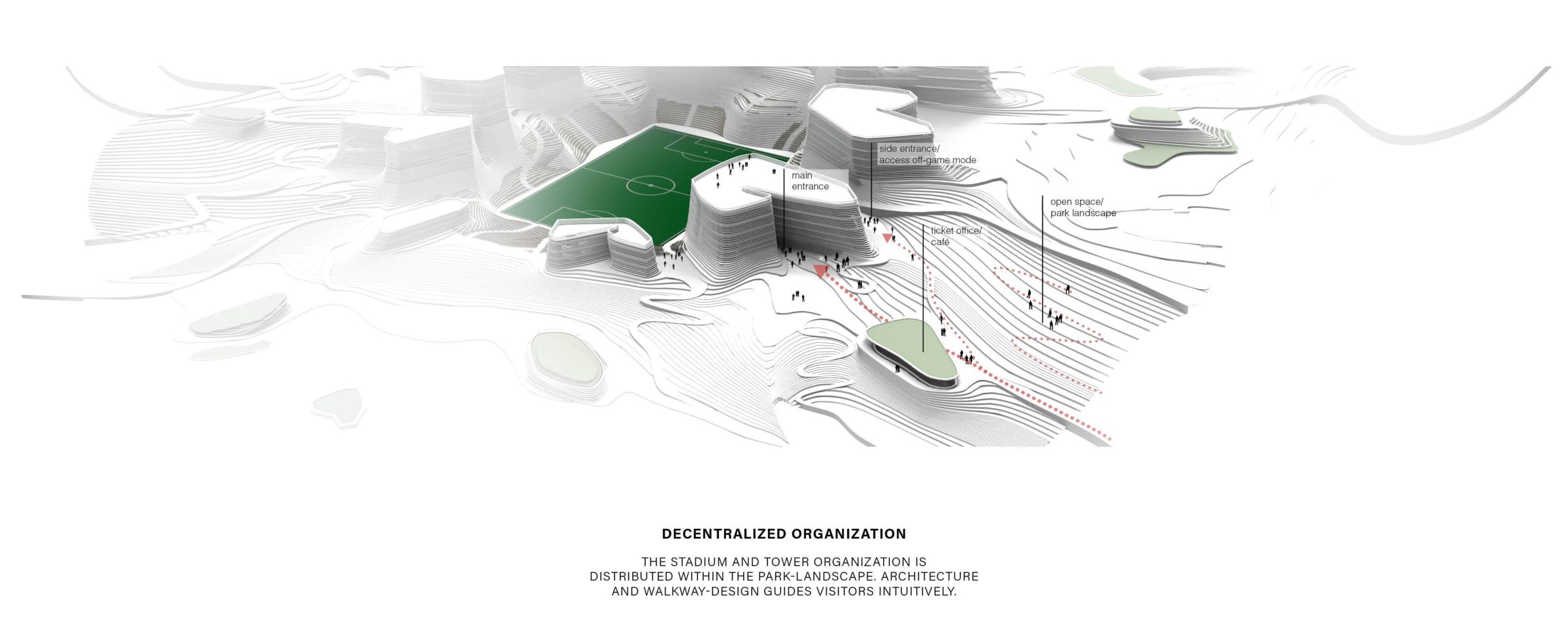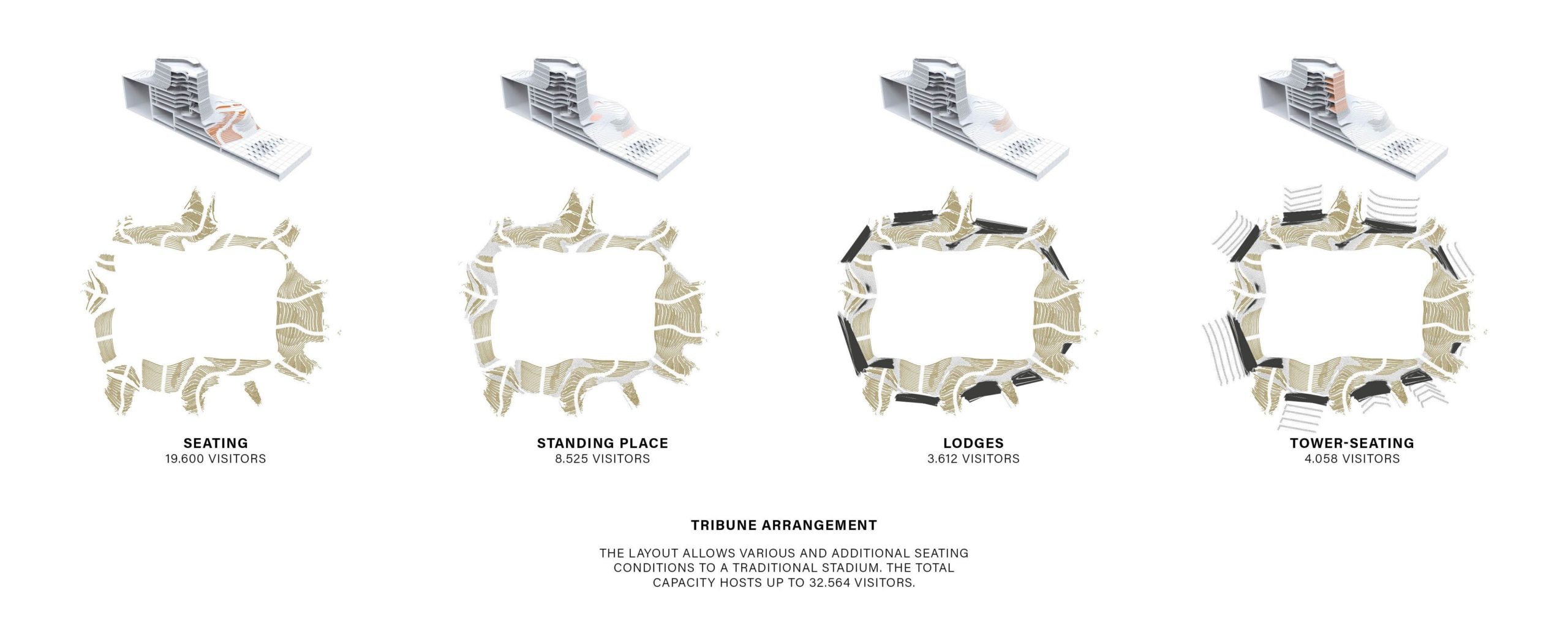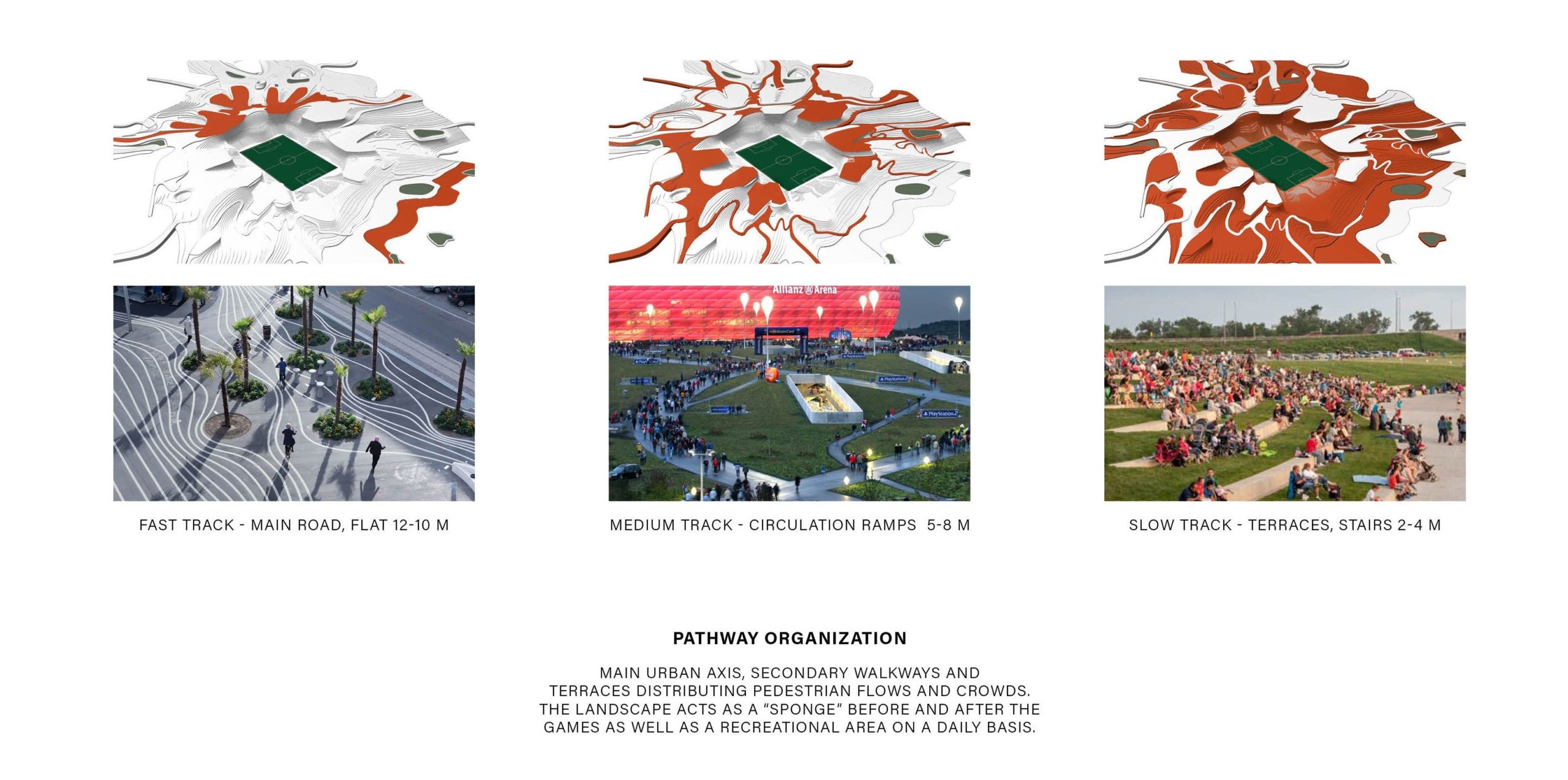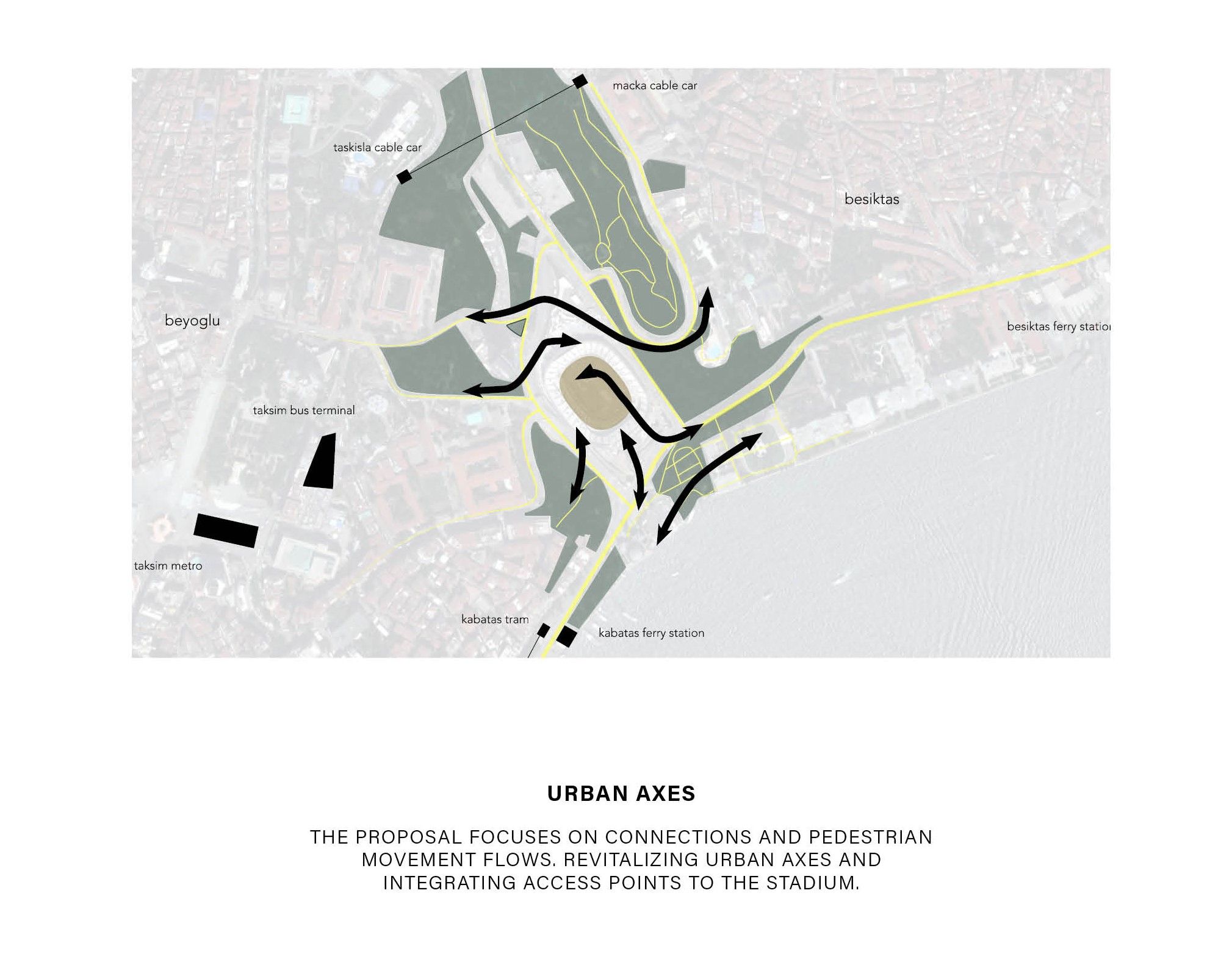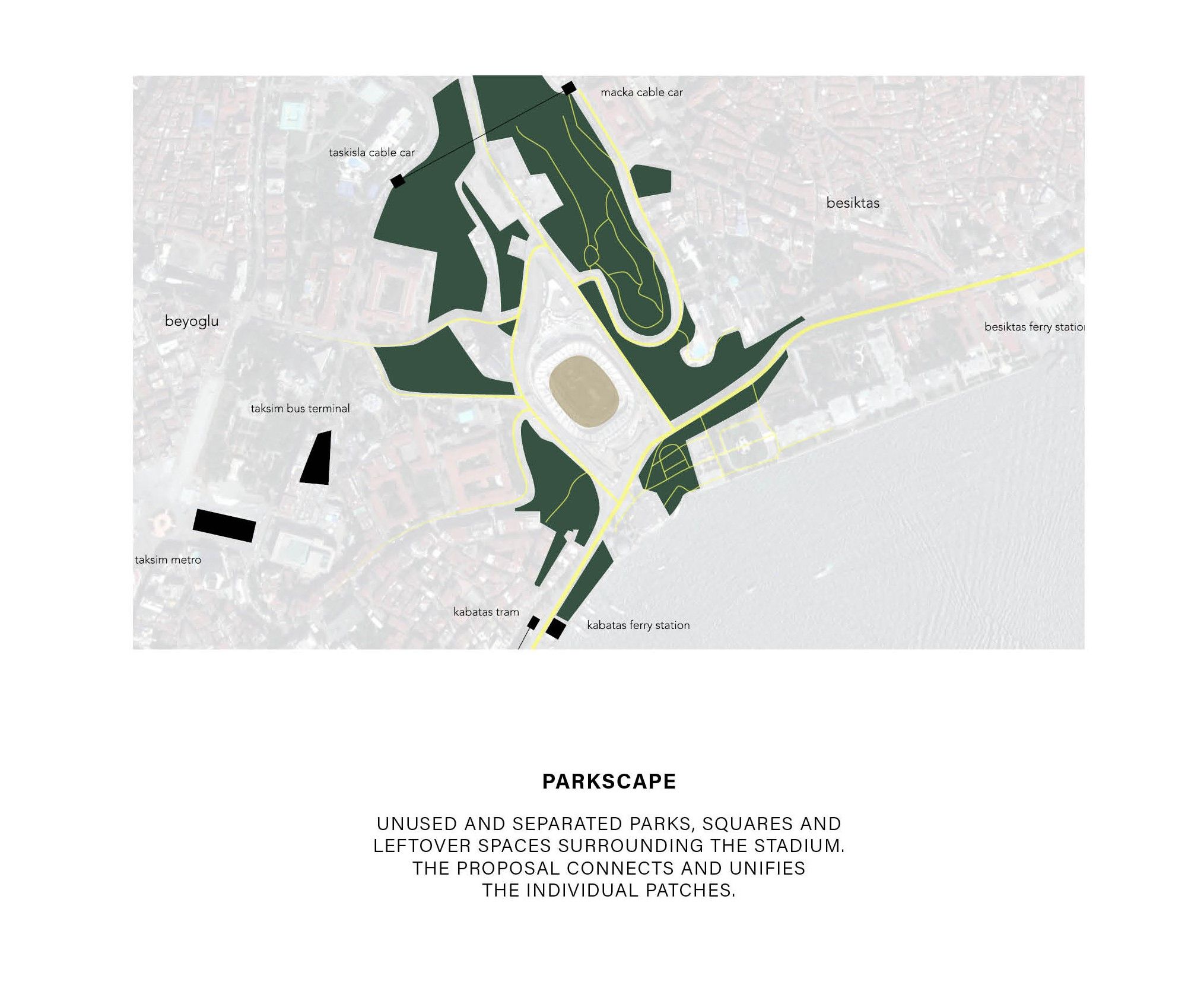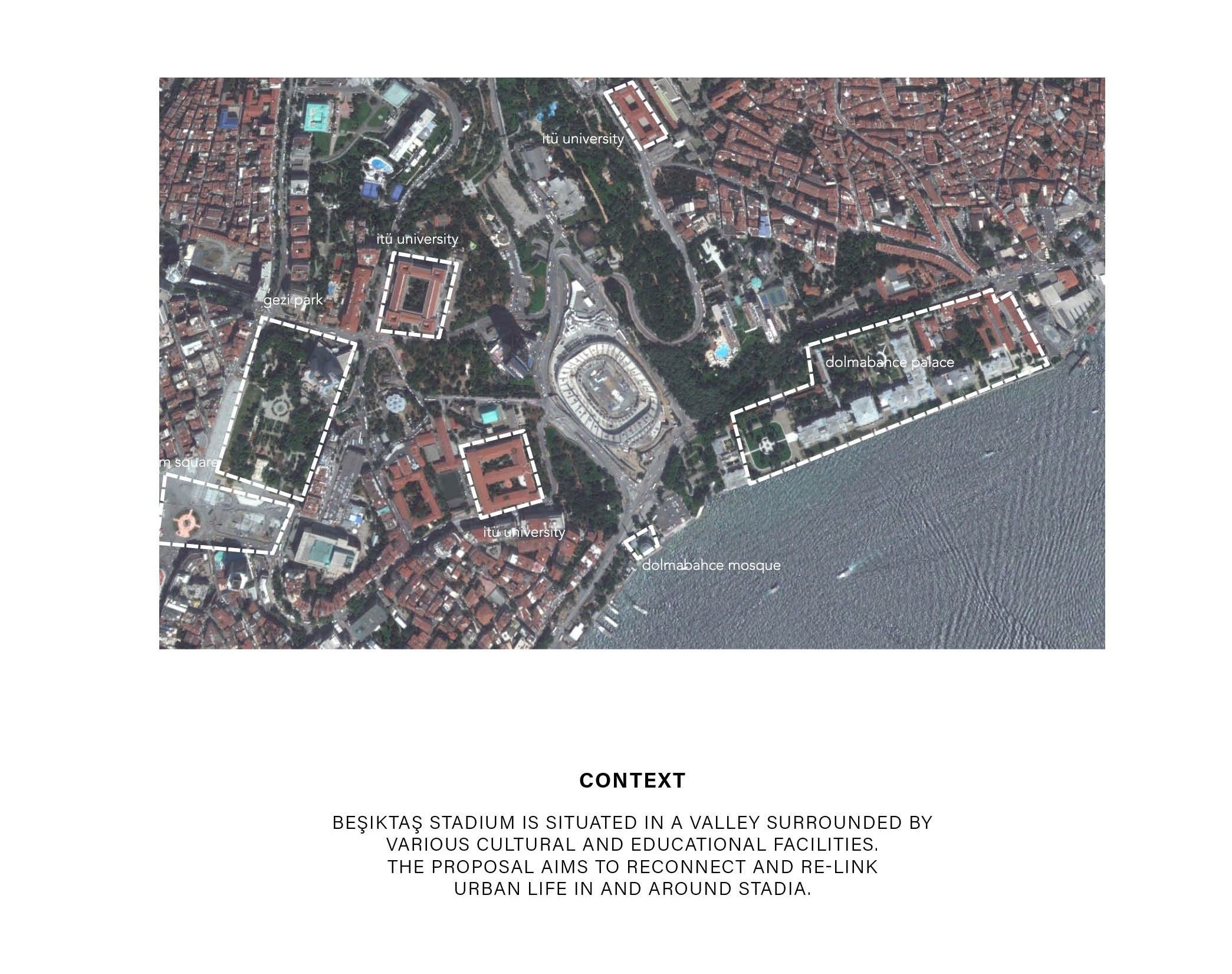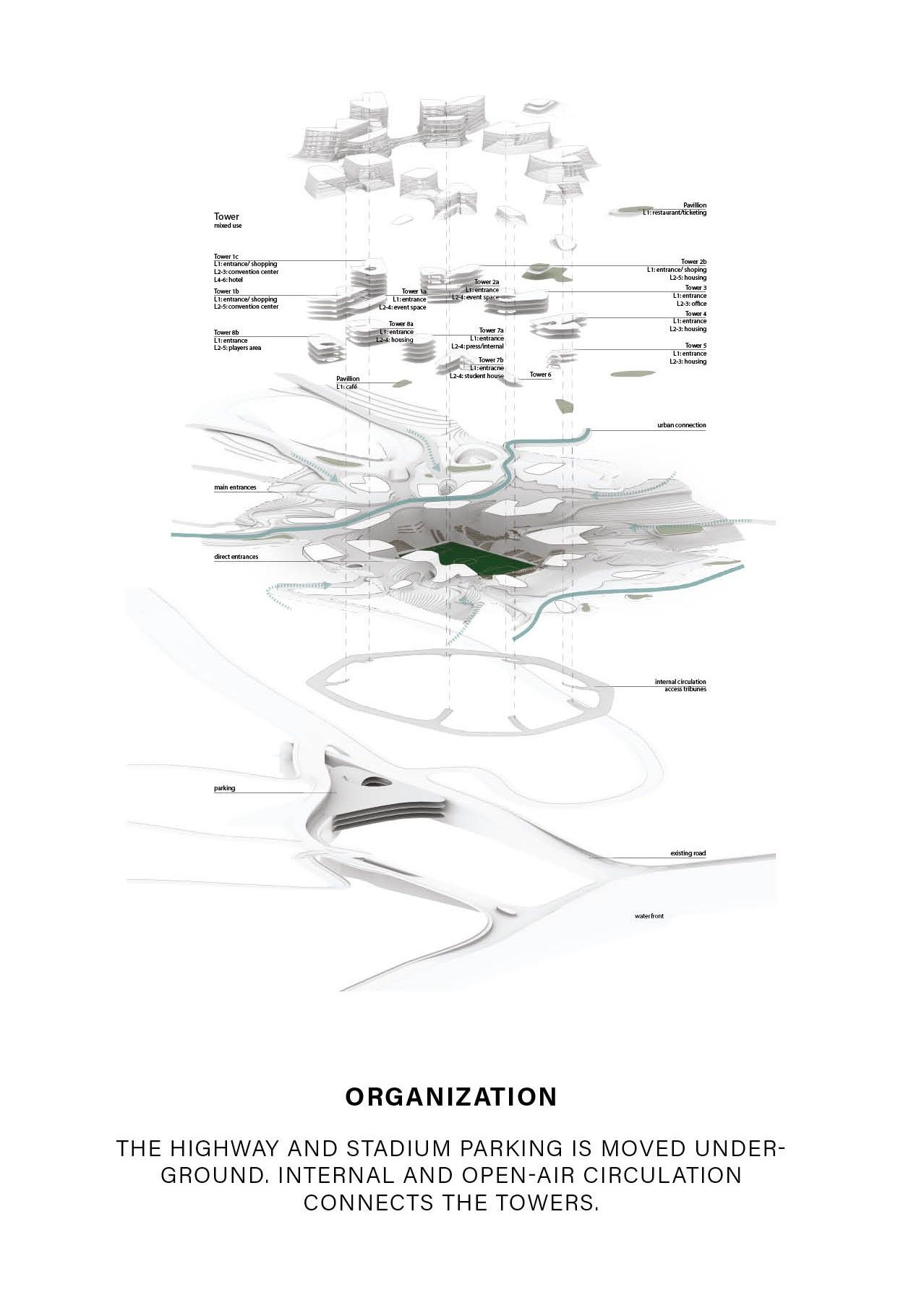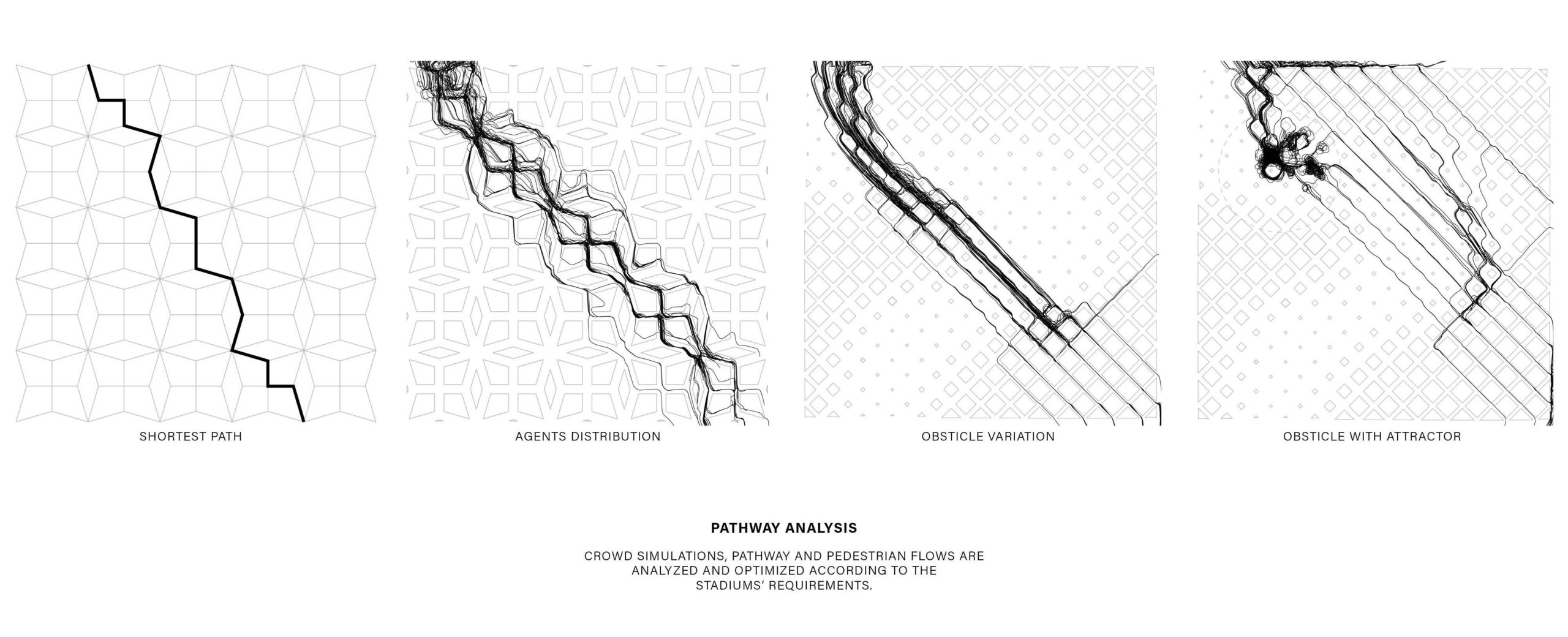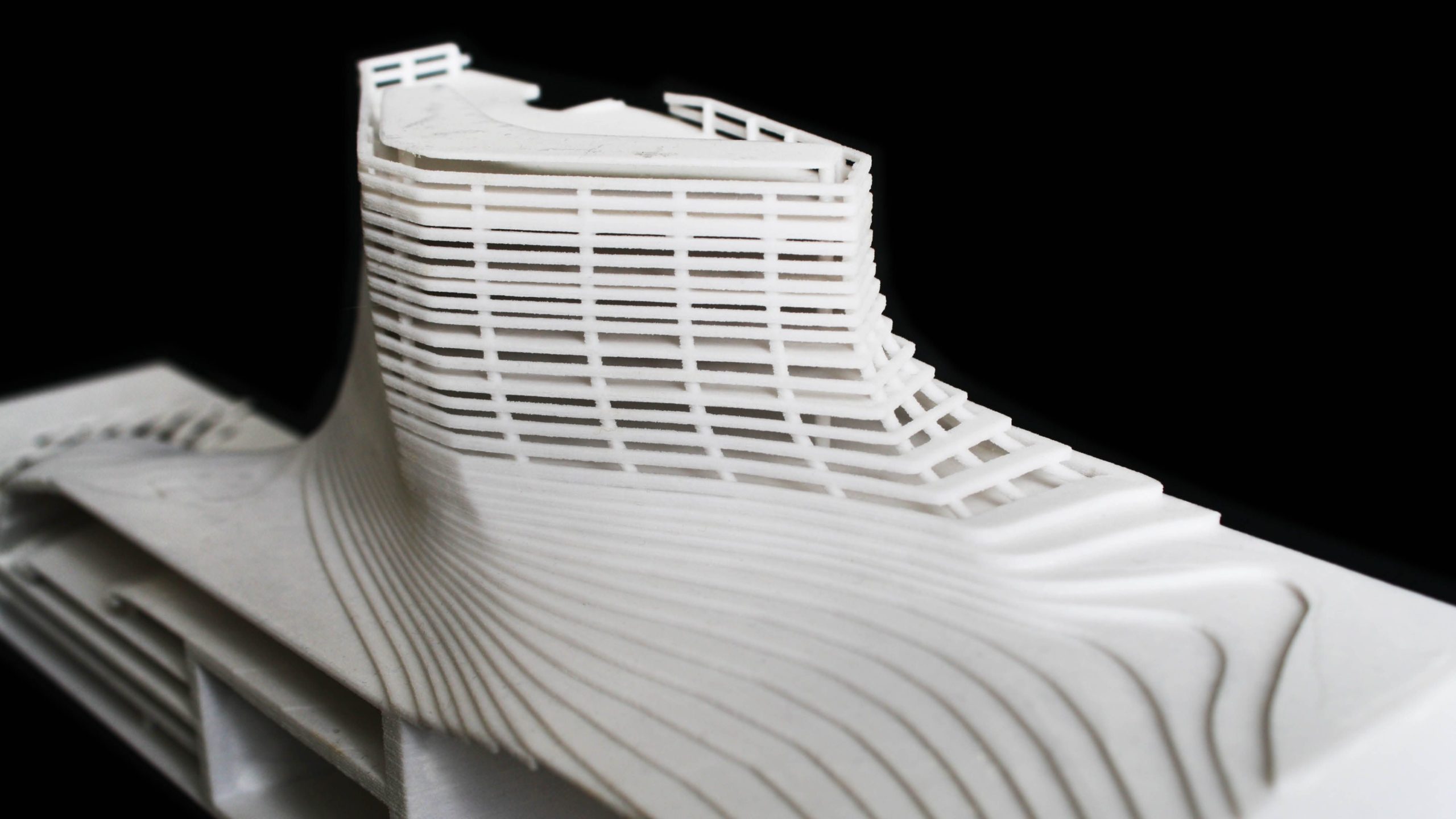Arch2O has received this project from our readers in order to participate in the Students week 9 event. In students week 10, STUDENTS will have the chance to create their own profile pages in arch2o.com For more details please CLICK HERE
(Re)link Stadium , deals with the lack of connectivity typically found between
stadiums and their surrounding context. The context may be either urban or natural but contemporary stadiums are often found to be disconnected islands within their surrounds. In addition to their enormous footprint stadia also require large parking spaces, public infrastructure and other service spaces. Due to these spatial requirements entire neighborhoods are adversely affected by the addition of new stadia.
As a rule the economic effects are mostly disastrous for the local area and as stadia are mostly publicly funded, protest and public votes become the normal case even before construction starts. Sports events and concerts with a positive value are changing into something negative and controversial in the public perception.
The project aims at developing a system that deals with the long-term integration of the Beşiktaş stadium in Istanbul. A stadium can be more than just a space for hosting events from time to time, rather it should be both an urban park and social hub with an architectural program. Main urban axis are activated and linked to the stadium. Using crowd simulations, pathways and pedestrian flows are analyzed and optimized according to the stadiums’ needs. The traditional typology fuses with the surrounding buildings and creates a new city center with the soccer field as its center piece. The tribunes and field can be transformed to be used 24/7 as a public space for the newly established neighborhood.
Just like old marked squares, the stadium consists of a particular organization of buildings, establishing a new type of public space that attracts both cultural as well as sporting events for a intense atmosphere. By hybridizing public space and an urban center with a stadium as its core function, the classic stadium typology transforms into a new urban development that can be better accepted by the public, resulting in a positive experience of concerts and sports events.
Project info:
Student Name: Martino Hutz
University: University of Applied Arts, Vienna
Architecture, Studio Hadid/Sejima
Courtesy of Martino Hutz
Courtesy of Martino Hutz
Courtesy of Martino Hutz
Courtesy of Martino Hutz
Courtesy of Martino Hutz
Courtesy of Martino Hutz
Site Plan
Site Plan
Site Plan
Site Plan
Diagram
Details
Model


